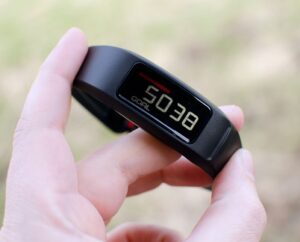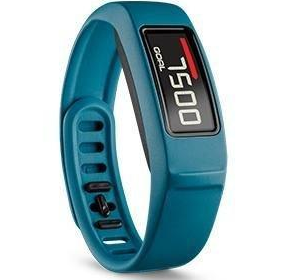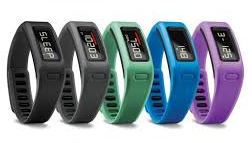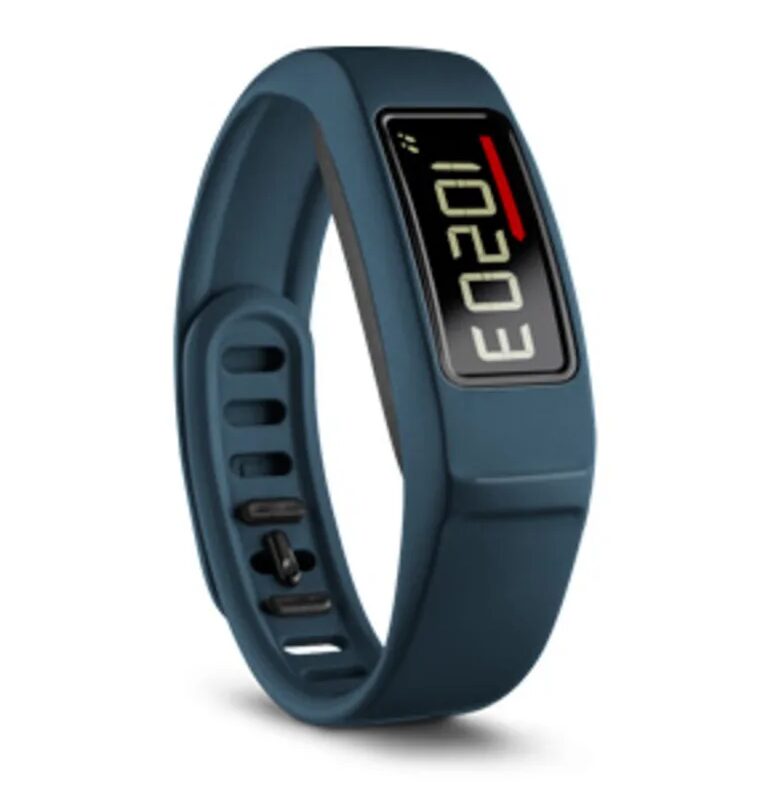*This post may contain affiliate links for which I earn commissions.*
A smart watch is how most people first experience smart fitness products. My first purchase was the Garmin Vivofit. It’s true that you never forget your first. My, how times have changed.
I pulled out my Vivofit smartwatch when I decided to write this article. Yes, I still own that beauty, and it still works! Like an old friend the Vivofit still displays today’s date and time accurately, and when I put it on my wrist it immediately began to do its job!
Vivofit: A Classic Smart Watch
Let’s rewind the digital clock back to 2015. The world is still learning to pronounce “Huawei,” the iPhone 7 has just ditched the headphone jack (RIP), and in the wearable fitness world, the Garmin Vivofit quietly steps onto the scene.
No AMOLED. No Siri. No pulse-oximeter that sounds like it could double as a polygraph test. Just a humble plastic band, quietly counting your steps, like a supportive friend who’s always there—but never asks for a software update.
Today we live in a smart watch world obsessed with wrist-based wizardry. Your watch now wants to coach you through a HIIT workout, control your smart lights, take messages, and ask if you’re feeling “emotionally aligned.” I just want to know if I’ve hit 10,000 steps.
But let’s talk about why I believe the Garmin Vivofit is still worth loving—and why it might just be the analog soul we didn’t know we needed in today’s world.
Battery Life? Try Immortality.
Modern smartwatches last one to three days on a charge if you’re lucky and not tracking your REM sleep while playing Spotify and checking Slack messages from your wrist. The Vivofit, on the other hand, laughs in the face of battery anxiety.
This thing runs on a coin cell battery and lasts up to a full year. You don’t need any cables, no ports, and it stores data without a smart phone for weeks. You can buy the battery at the local drug store, and even I am able to replace it using a simple eye glass repair kit small screw driver.
You could wear your Vivofit on a sightseeing tour, get lost in the woods for six months, emerge to civilization again, and it would still be counting your steps, telling time, and estimating your calorie burn. That’s not a fitness tracker. That’s a wrist-mounted legend.
No Notifications? No Problem.
The Vivofit doesn’t buzz when someone likes your brunch photo. It won’t send Slack message at 9:47 PM on a Sunday. It doesn’t remind you to get up, take a walk, or drink more water. It doesn’t take phone calls. That’s precisely why it’s amazing.

It’s the perfect antidote to information overload. No interruptions, no guilt for ignoring notifications, just pure step-counting serenity. It’s a mindfulness device by accident.
Not-So-Smart Lifestyle
It isn’t fair to say this watch has no features. You can change the screens by pushing a button on the side of the device to display today’s date, the time, your current step count, you step goal for the day, and set the watch to SLEEP so it doesn’t calculate the calories burned if you have a restless night.
The Vivofit learns your exercise routine and lowers or raises your step goals based on past performance. When you surpass your step goals a tiny “+” sign appears on the screen like a secret ataboy message between friends that you are doing a great job.

It doesn’t care about your VO2 max or whether your heart rate zone is optimal for fat burning. It can’t tell how you slept or if you’re stressed. It only wants you to move.
But if you sit too long, it displays a firm little red move bar, which somehow feels more motivating than all the passive-aggressive vibrations and messages in the world.
Simple Is Smart
With today’s smartwatches, setup is practically a part-time tech job. Log in, sync, update firmware, calibrate sensors, approve 47 app permissions, then reboot because the weather app crashed.
The Vivofit? Strap it on. Walk. That’s it.
It’s Waterproof!
I was horrified when I replaced my Vivofit for a watch that wasn’t waterproof. My smart watch habits were firmly established with the Vivofit. I destroyed one Amazon brand watch, and I lost count of the times I nearly destroyed the newer, more expensive, watches when I jumped into the pool or stepped into the shower with them on my wrist.
No Subscriptions
The Vivofit is apologetically a no frills watch. You do not need a subscription to track your routine and update your historical data. It just works. And that could be why Garmin and others quickly abandoned this one-and-done business model, opting for premium subscriptions that unlock personalized insights and coaching for workouts, stress management, advanced health metrics and other health management tools.
The Garmin connect app that synced Vivofit historical data to the phone was tempermental and often would need two or three sync sessions to setup your data accurately. Wired Magazine gave the Vivofit a score of 8 out of 10 in its first review precisely because of the app problems. I long since abandoned the Connect app, but I hope they’ve improved that.
The Garmin website of 2016 sold replacement bands for the Vivofit so owners could change the mood of their watch. There weren’t any other accessories to buy.

Is there still a place for retro?
Let’s be honest: the Vivofit looks like something a suburban mom or dad would wear with their bright white New Balances sneakers—and that’s exactly my point. It was unapologetically utilitarian. You’re not wearing it to match your business casual outfit. You’re wearing it because it does its job—and does it well.
In this Corner, the challenger, the 2025 Smartwatch
Don’t get me wrong—today’s smartwatches are astonishing. ECGs on your wrist. Blood oxygen sensors. Real-time location tracking for marathon training or casual wilderness survival. You can pay for coffee, text your friend, and check your stocks in one glance.
But they’re also a bit invasive and needy. They want to be charged constantly. They nudge you like a clingy partner. They’re sleek, yes—but also expensive, complicated, and often more about features than the focus of fitness.
The Garmin Vivofit is like the flip phone of fitness bands. It doesn’t try to do everything. It just does one thing—and does it better than most: it gets you moving.
So maybe, just maybe, in this age of biometric excess and smart watch overstimulation, there’s room for a comeback. Or at least a time and place for this quietly dependable classic.
If you’re tired of being managed by your watch, it might be time to let the Vivofit manage your steps—and absolutely nothing else.

